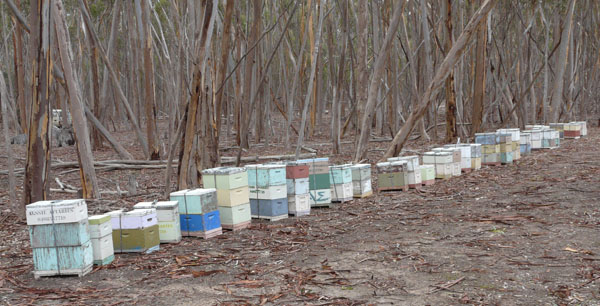Despite the vastly increased population of Melbourne, the amount of money spent looking after the park appears to be considerably less than it was 30 years ago. In the olden days the annual reports of the National Parks Service detailed the revenue from and spending on each park. This ceased after 1985 so total spending on the park cannot be compared. We can however compare the number of people employed to look after the park.
In 1985 at least 6 people were employed at the park, including the Ranger in Charge, a secretary and the homestead caretaker. Today there are four full time positions based at Woodlands, a ranger team leader and 3 rangers. (This excludes staff belonging to the East Metro fire district, whose only duties in the park are the creation and maintenance of fire breaks and the occasional planned burn.) So excluding the homestead caretaker the staffing level is 80% of what it was 30 years ago. However while in 1985 staff had responsibility solely for Gellibrand Hill Park, the current staff have to look after the enlarged Woodlands Historic Park and also 6 other parks - Greenvale Reservoir Park, Holden Flora and Flora Reserve, Organ Pipes National Park, Craigeburn Grasslands, Cooper Street Grasslands and Mt Ridley Reserve. The latter three protect grasslands of national significance, while Greenvale is a recreation area whose facilities have a very high maintenance cost.
Due to the cost of penalty rates only one staff member is rostered on at weekends, and there are never any staff in the district after 4pm. There needs to be frequent staff presence at Organ Pipes and Greenvale while the gates are open to deter vandals, and at Woodlands at other times as well since the public has 24 hour access. Putting a stop to activites such as illegal campfires would require staff to attend in the evenings.
Under-funding is of course not unique to Woodlands, and applies generally to parks in Victoria. Parks Victoria manages 18% of the state's land area and 5% of marine waters at a cost to taxpayers in 2015/2016 of less than $34 per Victorian. The cost is less than half this for country residents and proportionally higher for Melbourne residents, who pay a levy per property for the upkeep of metropolitan parks (although only 59% of the levy proceeds are received by Parks Victoria). If Woodlands Historic Park is typical, then there is not even enough funding to manage visitors and maintain facilities such as fences, tracks and signs, let alone conserve biodiversity.
Parks Victoria had 1010 full time equivalent employees at the end of the financial year. This is less one employee for each 4000 hectares managed by Parks Victoria, not counting marine sanctuaries. 38.2% of employees were above the level of ranger team leader (level 4), a proportion which increases every year. This is a very top-heavy organisation and getting more so all the time.
* From the income statement in the Parks Victoria 2015/2016 annual report, government funding plus parks and reserves trust funding was $195 million. I am assuming that the government funding is net of the payment of $10.9 million back to the government for revenue collected from national parks, since this does not appear in the expenses. The state population was about 5.9 million.
Revenue from Woodlands Historic Park

Up to 1985, the largest annual revenue reported from the park was $10112 in 1983/84. This was one third of the expenditure on wages and general maintenance for that year. The major source of revenue was presumably cattle grazing. The following year the wages bill nearly doubled but revenue more than halved, presumably because cattle were withdrawn from what was to become the Back Paddock. For subsequent years no data is available but there would have been revenue from groups using the homestead, for example for wedding photography, and some merchandise sales at the homestead. Also the "tutor's cottage" at the homestead was rented out to a Parks Victoria employee. These sources of revenue continued until the whole homestead complex was leased out in 2006.
Nowadays the park produces revenue from the apiary site in the sugar gum plantation, some minor charges for the occasional film or television production, and possibly rent from the homestead lessee (although whether any such rent exceeds government grants to the lessee is unknown).
Revenue from the park helps the Parks Victoria budget but is of no direct assistance to the park. An exception was money from the ill-fated quarry filling project, at least some of which was returned to the park. Another exception is any money which might be raised by Conservation Volunteers Australia from tours in the back paddock. This money helps to support the conservation of the Eastern Barred Bandicoot.